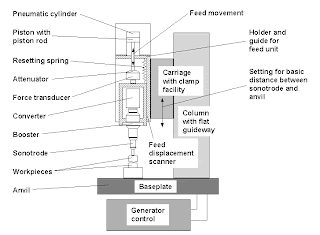The welding process which use the intense heat of an electric arc to effect a weld is known as arc welding process .
All of the arc welding process employ the same basic circuit .It is basically a fusion welding process .Contact is first made between the electrodes and the work to create an electric circuit and then by separating the conductors an arc is formed .The arc is sustained electrical discharge .Through a path of ionized particles called plasma .The electrical energy is converted into intense heat in the arc which attains a temperature ranging from 3000 Celisse to 4500 Celisse .The heat forms a pool a of molten metal by melting the electrode end and edges of the parents metal near the arc.This pool of molten metal on solidification becomes the weld .No pressure is generally required to effect a weld .
All of the arc welding process employ the same basic circuit .It is basically a fusion welding process .Contact is first made between the electrodes and the work to create an electric circuit and then by separating the conductors an arc is formed .The arc is sustained electrical discharge .Through a path of ionized particles called plasma .The electrical energy is converted into intense heat in the arc which attains a temperature ranging from 3000 Celisse to 4500 Celisse .The heat forms a pool a of molten metal by melting the electrode end and edges of the parents metal near the arc.This pool of molten metal on solidification becomes the weld .No pressure is generally required to effect a weld .











